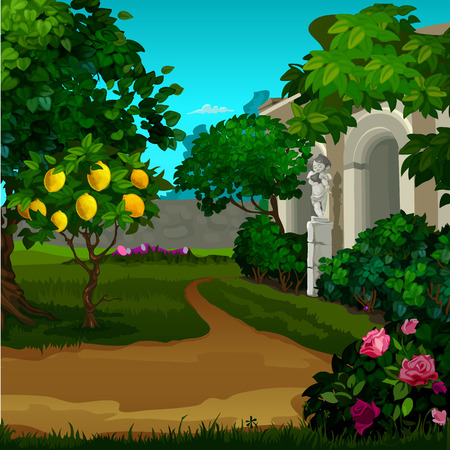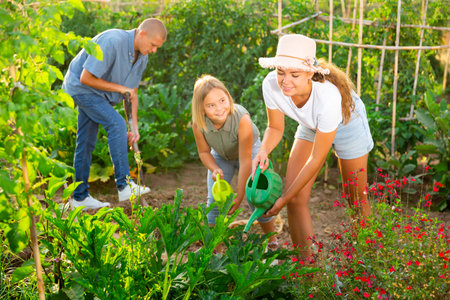Understanding Common Garden Birds and Their Behavior
If youre trying to bird-proof your garden, the first step is getting to know the birds that commonly visit American yards. Each species has its own habits and preferences, so understanding what attracts them can help you plan better defenses. Heres a quick look at some of the most frequent feathered visitors in U.S. gardens:
Common Garden Birds in the U.S.
| Bird Species | Region | Feeding Habits | Nesting Preferences | Why Theyre Attracted to Gardens |
|---|---|---|---|---|
| American Robin | Nationwide | Insects, worms, fruit | Trees, shrubs, ledges | Soft soil for worms, berry-producing plants |
| Northern Cardinal | Eastern & Central U.S. | Seeds, fruit, insects | Dense shrubs and low trees | Seed feeders, thick vegetation for nesting |
| Blue Jay | Eastern U.S. | Nuts, seeds, insects, small animals | Tall trees and forest edges | Feeders with peanuts or sunflower seeds, tall trees nearby |
| Mourning Dove | Nationwide | Seeds from ground or feeders | Ledges, gutters, open tree branches | Open ground for feeding, flat surfaces for nesting |
| Sparrows (House & Song) | Nationwide | Seeds, grains, crumbs | Eaves, vents, small cavities | Easily accessible food sources and shelter spots |
Why Birds Are Drawn to Your Yard
Your garden might be a bird paradise without you even knowing it. Birds are typically attracted by:
Food Sources:
- Berries and Fruit Trees: These offer a natural snack for robins, cardinals, and many others.
- Seed Feeders: While great for birdwatching, they also invite unwanted pecking and messes.
- Insects in Soil: Especially after rain or watering — robins love digging for worms!
Shelter and Nesting Spots:
- Dense Shrubs and Bushes: Perfect hiding places and nesting areas for songbirds.
- Eaves and Ledges: Doves and sparrows often nest on flat surfaces near homes.
- Tall Trees: Provide safety and observation points for birds like blue jays.
Water Availability:
- Ponds or Birdbaths: Great for hydration but may also attract flocks looking to bathe or drink.
- Irrigation Systems or Dripping Faucets: Even small water sources can bring them in.
The Importance of Observation
The more you observe which birds frequent your space and what they’re doing there—whether its feeding, nesting, or simply passing through—the better equipped youll be to choose physical barriers or visual deterrents that actually work. Stay tuned as we explore how to protect your garden without harming these curious visitors.
2. Physical Barriers: Netting, Fencing, and Row Covers
When it comes to keeping birds out of your garden, physical barriers are one of the most effective methods. These solutions create a direct obstacle between birds and your crops, helping to protect fruit trees, vegetable beds, and young seedlings. Let’s take a look at some practical options you can use in your backyard garden.
Bird Netting
Bird netting is a lightweight mesh that acts as a protective shield over plants. It’s ideal for fruit trees and berry bushes that attract birds like robins and starlings. Make sure to choose a netting with small enough holes (usually 1/4 inch or smaller) so birds can’t get tangled or sneak through. Secure the edges tightly to prevent gaps where birds might slip in.
Mesh Fencing
Mesh fencing is great for enclosing larger areas like vegetable beds. It’s sturdier than netting and can also help keep out rabbits and other small animals. Use a metal or plastic mesh with fine spacing, and make sure it’s tall enough—at least 4 to 6 feet—for better protection against flying intruders.
Floating Row Covers
Floating row covers are made of lightweight fabric that rests directly on top of plants or is supported by hoops. They allow sunlight, air, and water to reach the plants while keeping birds away from tender seedlings and greens. These covers are especially useful during the early growing season when young plants are most vulnerable.
Comparison of Physical Barriers
| Barrier Type | Best For | Pros | Cons |
|---|---|---|---|
| Bird Netting | Fruit trees, berry bushes | Lightweight, reusable, effective | Needs secure installation to avoid gaps |
| Mesh Fencing | Vegetable beds, larger plots | Durable, multi-purpose | Can be more expensive and permanent |
| Floating Row Covers | Tender seedlings, leafy greens | Protects from insects too, allows light in | May need removal for pollination or watering |
Tips for Success:
- Check barriers regularly for damage or loose spots.
- Avoid using bright-colored netting that may attract birds.
- If using row covers long-term, remove them periodically to let pollinators in.
By installing the right physical barriers in your garden, you can significantly reduce bird damage and enjoy a more bountiful harvest all season long.

3. Visual Deterrents: Reflective Objects and Predator Decoys
Birds are smart, but they’re also easily startled by sudden movements and shiny objects. That’s why visual deterrents can be a great way to keep unwanted birds out of your garden without causing them harm. These methods work best when used in combination with physical barriers or other bird control strategies.
Reflective Items That Scare Birds Away
Shiny, reflective surfaces confuse and frighten birds by creating unpredictable flashes of light. This mimics the glint of predator eyes or signals danger to them. Here are some common reflective items you can use:
| Item | Description | Best Placement |
|---|---|---|
| Reflective Tape | Mylar tape that flutters and reflects light in the wind | Wrap around garden stakes, fences, or tree branches |
| Old CDs or DVDs | Hang from strings to catch sunlight and spin in the breeze | Hang from trees, trellises, or near crops |
| Aluminum Foil Strips | Cuts of foil that rustle and shine in the wind | Drape over plants or attach to sticks around the garden bed |
| Mirror Stakes | Small mirrors mounted on stakes that reflect light randomly | Place throughout flower beds or vegetable patches |
Predator Decoys: Fooling Birds with Faux Threats
Birds naturally avoid areas where predators might be lurking. You can use this instinct to your advantage by placing realistic-looking decoys around your garden.
Popular Predator Decoys:
- Owl Statues: Life-sized plastic owls can be set on fence posts or rooftops. Choose models with moving heads for added realism.
- Hawk Kites: Designed to look like soaring hawks, these lightweight kites fly above your garden on breezy days.
- Snake Decoys: Rubber snakes placed among plants or along walkways can make birds think twice before landing.
- Scare-Eye Balloons: Brightly colored balloons with large eye patterns mimic predator eyes and move with the wind.
Tips for Using Visual Deterrents Effectively:
- Change positions regularly: Birds get used to stationary objects, so move your deterrents every few days.
- Combine multiple types: Use both reflective items and predator decoys together for better coverage.
- Avoid overcrowding: Spread them out across your garden so birds feel watched from all angles.
- Add sound if possible: Some deterrents come with rattles or noise makers to enhance their effectiveness.
If youve tried netting or fencing and still have feathered visitors helping themselves to your fruits and veggies, adding some simple visual tricks might just do the job. With the right combination of shine, movement, and fake predators, you’ll create a garden space that birds would rather skip.
4. Strategic Garden Design to Discourage Birds
When it comes to keeping birds away from your garden, how you design your space can make a big difference. A thoughtful layout using planting patterns, border selections, and smart distractions can help protect your most vulnerable plants without harming the birds. Here’s how you can shape your garden to gently guide feathered visitors elsewhere.
Use Planting Patterns That Confuse or Redirect Birds
Birds are naturally drawn to open areas where they can easily spot food. By mixing up your planting layout, you can create visual confusion that makes it harder for them to locate their favorite snacks. Try interspersing less desirable plants (like strong-smelling herbs or spiky textures) among fruits and vegetables. This not only deters birds but also creates a more diverse and healthy garden.
Examples of Companion Planting for Bird Deterrence
| Delicate Crop | Companion Plant | Reason |
|---|---|---|
| Strawberries | Lavender | Strong scent masks fruit aroma |
| Lettuce | Thyme | Low-growing herb hides leafy greens |
| Tomatoes | Basil and Marigold | Scented combo confuses bird senses |
Create Natural Borders That Act as Gentle Barriers
Physical barriers don’t always have to be nets or wires. Dense shrubs, tall grasses, or even hedges can serve as natural fences that limit bird access while enhancing your gardens beauty. Choose border plants that are thick, fast-growing, and preferably unappealing to birds.
Suggested Border Plants for Bird Control
- Boxwood: Compact and easy to shape; creates a tidy edge.
- Lemongrass: Tall and aromatic—birds tend to avoid it.
- Pyracantha: Thorny shrub that deters landing and nesting.
Add Decoy Feeding Stations Away From Key Areas
If you want to enjoy birdwatching without sacrificing your crops, consider installing decoy feeding stations at the far end of your yard. These stations give birds a reliable food source so they’re less tempted by what’s growing in your beds. Make sure these areas are stocked with seeds they love, such as sunflower or millet, and placed far from vegetable patches or fruit trees.
Tips for Effective Decoy Feeding Stations
- Keep feeders full during peak growing season to reduce competition with your crops.
- Add birdbaths near decoy areas to encourage birds to linger there instead of exploring the rest of the yard.
- Avoid placing feeders near delicate plants — distance matters!
With just a few strategic changes in how you design and manage your garden space, you can gently persuade birds to stay clear of sensitive areas—without resorting to harsh measures. It’s all about working with nature rather than against it.
5. Eco-Friendly Considerations and Legal Protection of Birds
When creating a bird-proof garden, its important to strike a balance between protecting your plants and respecting the environment. Many birds are beneficial to gardens, eating pests and helping with pollination. Plus, in the United States, certain birds are protected by federal law, so using safe and legal methods is essential.
Environmentally Friendly Bird Deterrents
Instead of harmful chemicals or traps, opt for natural and eco-friendly ways to keep birds away from specific areas of your garden. Here are some methods that are both effective and safe:
| Method | Description | Eco-Friendly? |
|---|---|---|
| Bird Netting | Covers plants to prevent birds from reaching them | Yes – reusable and non-toxic |
| Reflective Tape | Flashes light to scare off birds visually | Yes – no chemicals involved |
| Garden Spinners or Pinwheels | Move with the wind to startle birds | Yes – powered by wind, not electricity |
| Motion-Activated Sprinklers | Shoots water when movement is detected | Yes – uses water only, no harm to wildlife |
Know the Law: The Migratory Bird Treaty Act (MBTA)
The Migratory Bird Treaty Act of 1918 is a key piece of legislation in the U.S. that protects native bird species. Under this act, its illegal to harm, trap, kill, or even possess parts like feathers or nests of protected migratory birds without proper permits. This means any bird deterrent method you use must be non-lethal and should not interfere with nesting or breeding activities.
Common Protected Birds in U.S. Gardens
- Northern Cardinal
- American Robin
- Blue Jay
- Mourning Dove
If youre unsure whether a bird species is protected, you can check with your local wildlife agency or visit the U.S. Fish & Wildlife Service website.
Best Practices for Bird-Safe Gardening
- Avoid using sticky substances or glue traps—these can harm both birds and beneficial insects.
- Install physical barriers like netting only after checking for active nests nearby.
- If using visual deterrents like reflective tape or decoys, move them around occasionally so birds don’t get used to them.
By choosing humane and legal solutions, you can protect your garden while also being a good neighbor to the local bird population.


